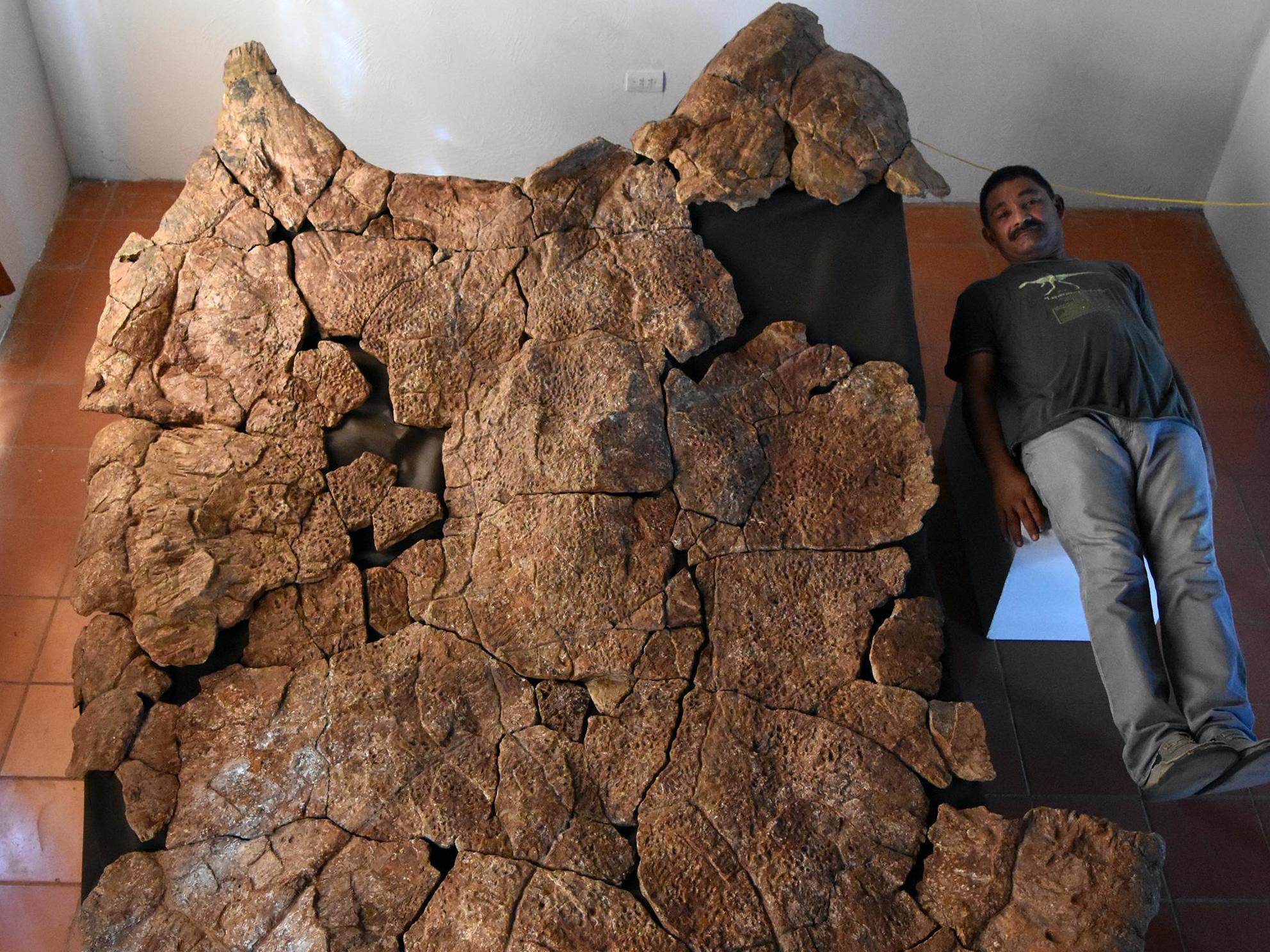Giant extinct turtle’s three-metre horned shell may have been used for combat, experts say
‘The carapace of some Stupendemys individuals reached almost three metres, making it one of the largest, if not the largest turtle that ever existed,’ lead researcher says

A species of giant turtle that may have been the largest to ever stalk the earth had a three-metre-long horned shell it may have used for combat, researchers have said.
Stupendemys geographicus lived in a region of tropical south America that was once a vast swampland but has since become a desert region of Venezuela — producing a wealth of giant fossils including 700kg rats and 12m long crocodiles.
Now researchers studying fragments of one of the turtle’s vast shells and the first specimen of a jaw bone to be found by humans have discovered the creature was likely 100 times heavier than its modern day cousin, the 52cm-long big-headed Amazon river turtle.
“The carapace of some Stupendemys individuals reached almost three metres, making it one of the largest, if not the largest turtle that ever existed,” said Marcelo Sánchez, director of the Paleontological Institute and Museum of the University of Zurich who led the study.
However beyond the scale of the giant turtle, which lived five to 10 million years ago and had an estimated body mass of 1,145kg, scientists were able to uncover a feature of the animal they weren’t expecting — horns.
California Academy of Sciences’ Natural World photography competition
Show all 11After assessing two different shells, researchers were able to find examples of sexual dimorphism, where different genders of a species exhibit different characteristics. The shells of the males appeared to bear horned ridges at the front of their shells, while female shells remained smooth and rounded either size of their necks.
The adaptation, revealed in the journal Science Advances, marks the first time such horns have ever been seen in side-necked turtles, one of the two major groups of turtles on the planet.
Researchers have since suggested the horns could have been used to protect the giant heads of the males of the species, and that they may have used them to fight — particularly with other males.
The turtle, which was first identified in the 1970s, may have been huge and well protected by its vast shell, but that did not offer it a free pass from predation. Instead researchers believe one of the world’s largest turtles may have lived at the same time as one of the largest members of the alligator family.
Bite marks and punctured bones from fossilised carapaces have shown the creature was likely preyed upon by purussaurus. The largest of the crocodile-like caimans, some purussaurus are estimated to have grown to lengths of 12.5m — roughly the length of a double-decker bus.
Subscribe to Independent Premium to bookmark this article
Want to bookmark your favourite articles and stories to read or reference later? Start your Independent Premium subscription today.

Join our commenting forum
Join thought-provoking conversations, follow other Independent readers and see their replies